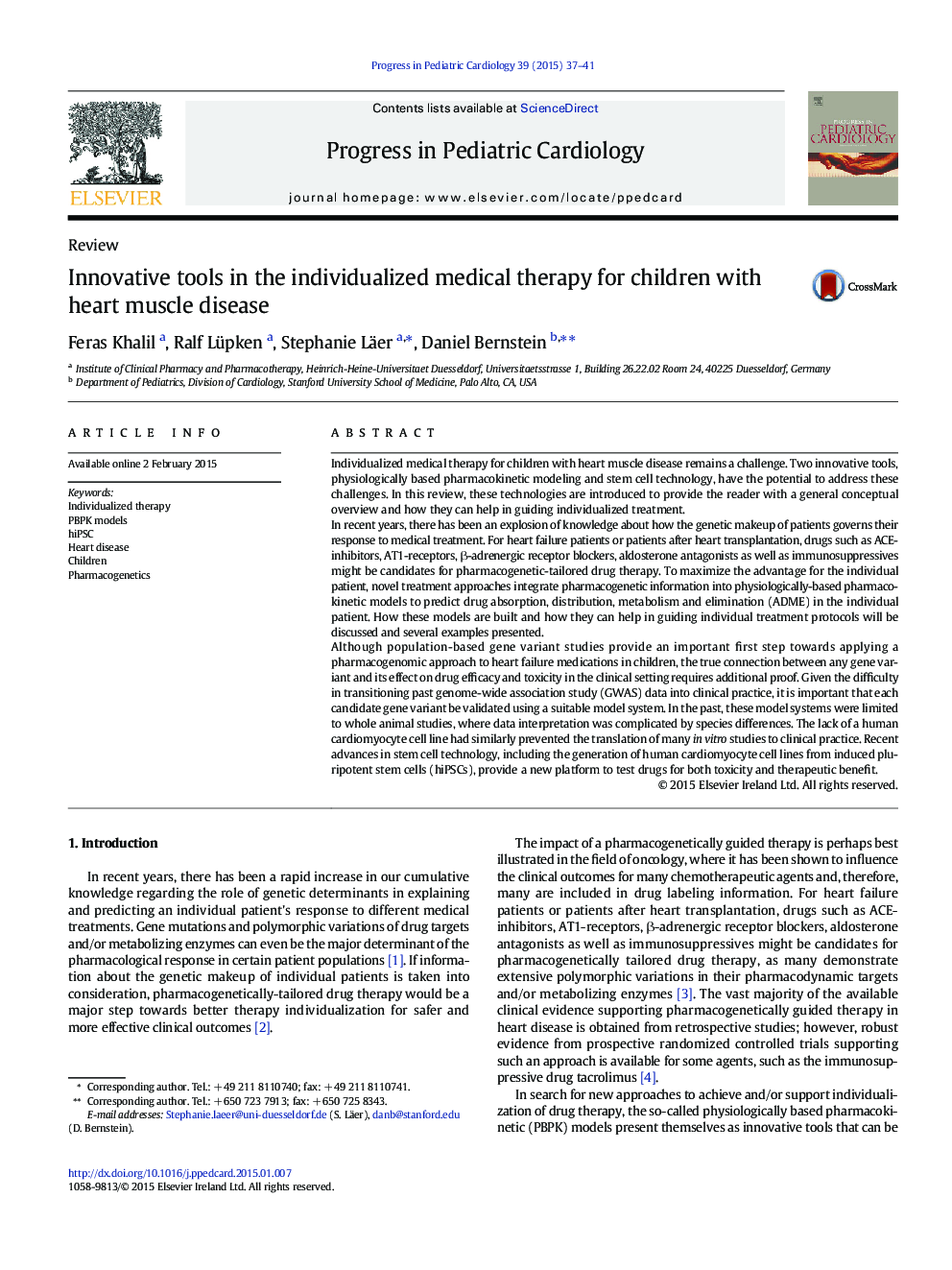| کد مقاله | کد نشریه | سال انتشار | مقاله انگلیسی | نسخه تمام متن |
|---|---|---|---|---|
| 3007101 | 1181293 | 2015 | 5 صفحه PDF | دانلود رایگان |
• PBPK modeling and stem cell technology are innovative tools to address challenges in individualized medical therapy
• PBPK models can integrate characteristics of individual patients for better clinical outcomes and efficient treatment strategies
• PBPK models are qualified to extrapolate existing knowledge to clinically understudied groups such as children
• hiPSC-CMs are a major technological advance to study complex interactions between human gene variants and specific cardiac diseases
• hiPSC-CMs will allow building of cell panels from patients with PK/PD gene variants to facilitate development of new therapeutic agents
Individualized medical therapy for children with heart muscle disease remains a challenge. Two innovative tools, physiologically based pharmacokinetic modeling and stem cell technology, have the potential to address these challenges. In this review, these technologies are introduced to provide the reader with a general conceptual overview and how they can help in guiding individualized treatment.In recent years, there has been an explosion of knowledge about how the genetic makeup of patients governs their response to medical treatment. For heart failure patients or patients after heart transplantation, drugs such as ACE-inhibitors, AT1-receptors, β-adrenergic receptor blockers, aldosterone antagonists as well as immunosuppressives might be candidates for pharmacogenetic-tailored drug therapy. To maximize the advantage for the individual patient, novel treatment approaches integrate pharmacogenetic information into physiologically-based pharmacokinetic models to predict drug absorption, distribution, metabolism and elimination (ADME) in the individual patient. How these models are built and how they can help in guiding individual treatment protocols will be discussed and several examples presented.Although population-based gene variant studies provide an important first step towards applying a pharmacogenomic approach to heart failure medications in children, the true connection between any gene variant and its effect on drug efficacy and toxicity in the clinical setting requires additional proof. Given the difficulty in transitioning past genome-wide association study (GWAS) data into clinical practice, it is important that each candidate gene variant be validated using a suitable model system. In the past, these model systems were limited to whole animal studies, where data interpretation was complicated by species differences. The lack of a human cardiomyocyte cell line had similarly prevented the translation of many in vitro studies to clinical practice. Recent advances in stem cell technology, including the generation of human cardiomyocyte cell lines from induced pluripotent stem cells (hiPSCs), provide a new platform to test drugs for both toxicity and therapeutic benefit.
Journal: Progress in Pediatric Cardiology - Volume 39, Issue 1, July 2015, Pages 37–41
